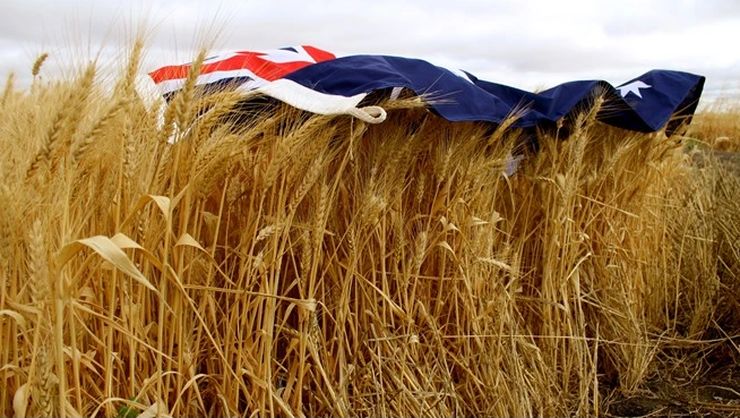Australia: Sowing focus, lower dollar lift wheat, barley

Prices for winter cereals have risen by up to $10 per tonne in the past week to reflect stronger export demand for wheat and a local call for barley.
The weaker Australian dollar has boosted interest in cargoes of ASW and APW-type wheat in the bulk market, and container business generally.
In Queensland, sorghum values have dropped around $25/t as export demand falls away due to a perceived lack of volume in the near term.
Across Australia, most growers have started their winter-crop sowing programs, and have little interest in selling anything more than a load or two for out-turn in coming weeks.
| Apr 18 | Apr 11 | |
| Barley Downs | $395 | $388 |
| ASW wheat Downs | $390 | $380 |
| Sorghum Downs | $355 | $380 |
| Barley Melbourne | $345 | $335 |
| ASW wheat Melbourne | $355 | $345 |
Table 1: Indicative prices in Australian dollars per tonne
Most sorghum growers in northern New South Wales and southern Queensland have resumed harvesting after recent rain, and some growers have finished.
Out-turn is a slower process, as many loads are going into on-farm silos for aeration to reduce moisture, and others are going through the drier.
It appears that no bulk sorghum business ex Brisbane is booked for coming weeks, unusual for this time of year, and container business can find enough SOR1 to meet export specs.
Cash prices have therefore fallen away, with the region’s poultry and pig producers covered in the near term.
Heavily downgraded sorghum for feed is said to have traded at $250/t or less in the delivered Downs market.
Bids on the lowest two grades have tumbled, which indicates all local homes are full for now.
Minor to excessive levels of field mould, which poses a risk to animal health, is appearing in some loads.
“Field mould is getting some loads knocked back from SOR1 to SOR2,” one trader said.
However, some growers are harvesting and delivering SOR1 with no problems, although execution remains slow.
“We’re finding it hard to get growers to commit for delivery now on existing contracts, or do new ones.”
The Central Queensland sorghum harvest is yet to start, and is pencilled in on shipping stems to fill several vessels bound for China.
For now, China’s demand is focused on the Americas.
“We’ve sent out so many messages to the Chinese that our quality was going to be a disaster so…they might be looking at Argentina and the US just now.”
On winter cereals, smaller consumers are buying a load or two.
“They’ve run out of dear stocks and they’re buying hand to mouth.
“That could get awkward, as we’re not getting enough trucks to move grain.”
“On wheat, smaller consumers are putting up their hand every day, and barley’s starting to thin out.”
On cottonseed, Woodside Commodities managing director Hamish Steele-Park said values have been steady in recent weeks.
“Ginning about to start, a little delayed this year,” Mr Steele-Park said.
“Some gins expected to get going this week , but most won’t start until May.
New-crop cottonseed is priced at $455-$460/t ex Moree and $500/t delivered Downs basis spread for the upcoming ginning season.
In southern NSW, cottonseed is priced at $455/t ex gin, while the Macquarie Valley is quoted at $450/t gin spread.
“Domestic demand is subdued, so the market here is being dictated by China’s demand.”
Japan and South Korea are said to be able to buy US cottonseed for cheaper than Australian, and currency has also had an impact.
“The lower Australian dollar has pushed up DCT values this week to over $570/t.”
Growers in Queensland and northern NSW are picking cotton, and harvesting sorghum and mungbeans, and many have made a solid start on winter-crop planting
In the southern market, the weaker Australian dollar has boosted export interest on wheat, and domestic consumers are moving on barley.
“Things are firmer on the lack of rain and the lower currency,” Wilken Group trader Andrew Kelso said.
“It’s pretty hard to buy barley, but wheat’s a bit easier.
“Growers are sowing now, so they’re busy doing that, and not a lot have an appetite to sell.”
“From mid to late May, we should see more activity from growers.”
Demand from the container market is also being seen on wheat, and lupins, faba beans, and field peas are too expensive to price into local rations in considerable volume.
A good corn harvest in Victoria and irrigated districts of southern NSW is expected to put considerable volume into the domestic stockfeed market ahead of the main joining period for dairy cows in June and July.
On farm, many growers in NSW, Vic and South East South Australia have started sowing into good moisture.
Conditions in parts of SA and most of Western Australia remain extremely dry, and growers are hoping for a soaking rain in the next three weeks to get their crops off to a strong start.
Read also
Wheat in Southern Brazil Impacted by Dry Weather and Frosts
Oilseed Industry. Leaders and Strategies in the Times of a Great Change
Black Sea & Danube Region: Oilseed and Vegoil Markets Within Ongoing Transfor...
Serbia. The drought will cause extremely high losses for farmers this year
2023/24 Safrinha Corn in Brazil 91% Harvested
Write to us
Our manager will contact you soon



